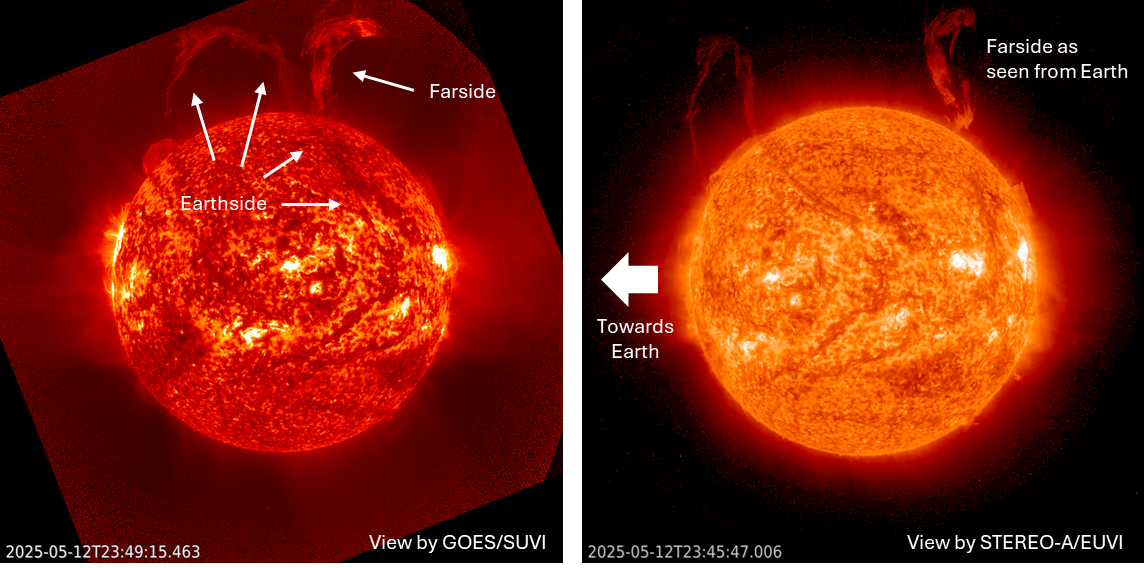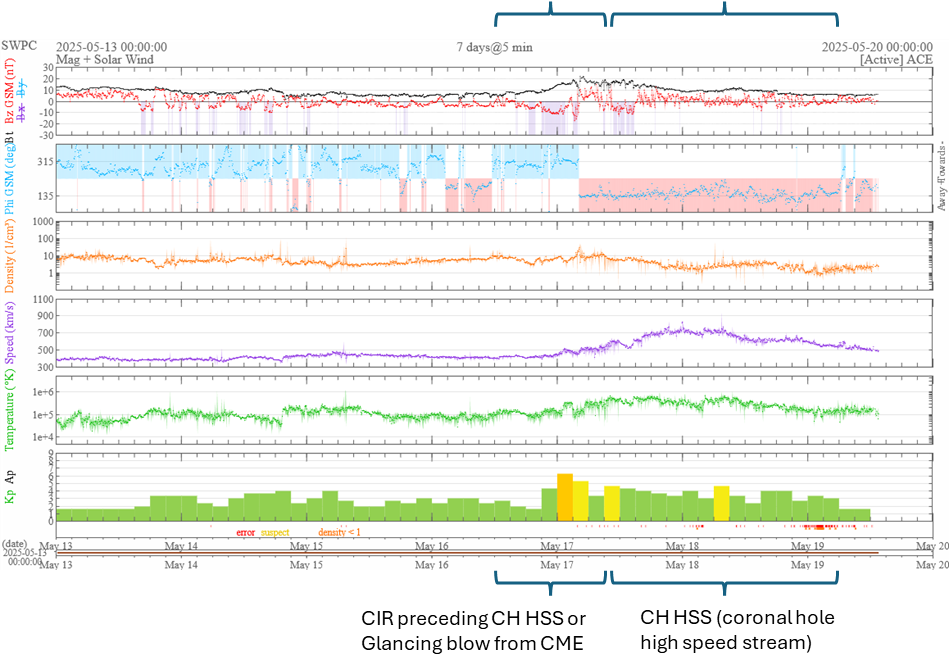It was quite a start of the week! First, on 13 May, there was an X1.2 flare produced by active region SIDC 0494 (NOAA 4086) near the northwest limb. It was followed a day later by an X2.7 flare from the trailing portion of SIDC 0496 (NOAA 4087) near the northeast solar limb. However, both flares were preceded by an even more impressive eruption. Indeed, late on 12 May, a filament with a length of twice the Earth-Moon distance (!) erupted from the Sun's northern hemisphere. Solar filaments are clouds of charged particles ("plasma") above the solar surface squeezed between regions of opposite magnetic polarity. Being cooler and denser than the plasma underneath and their surroundings, they appear as dark lines when seen on the solar disk, or as bright blobs when seen near the solar limb (then they are called "prominences"). Special filters are required to observe these features, such as in the Hydrogen-alpha (H-alpha) line in the red part of the solar spectrum (656.28 nm), or in some extreme ultraviolet (EUV) passbands such as GOES/SUVI 195 or SUVI 304. In this case, the filament was not so obvious and long in H-alpha as it was in EUV imagery. Underneath to the left is a clip by GOES/SUVI showing the Sun at temperatures around 80.000 degrees (SUVI 304), covering the period from 12 May (15:00UTC) until 14 May (12:00UTC). It shows first the filament eruption, followed by the X-class events.
 |
 |
The filament eruption looks more complex than it is, due to another filament that erupted more-or-less in the same line -of-sight as the big filament eruption, but actually originated from the Sun's far side. By using EUVI 304 imagery from the STEREO-A spacecraft, currently preceding the Earth by 36 degrees, the two can be disentangled, as shown in the annotated imagery underneath. A clip with STEREO-A/EUVI 304 imagery covering the same 12 to 14 May period as GOES/SUVI can be found above (to the right).

The associated coronal mass ejection (CME) was wide but slow, hiding the much narrower CME from the farside filament eruption. In the clips underneath the white light coronagraphic imagery from SOHO/LASCO C2 and STEREO-A/COR2 are overlaid on the corresponding EUV imagery by the spacecraft. In particular from the STEREO-A point of view, the CME looked like a textbook example, with a bright leading edge, dark cavity and a bright core (the filament).
 |
 |
In view of the location of the filament, a glancing blow from the CME to the earth environment was not excluded by the SIDC SWx forecaster. Solar wind data from DSCOVR show indeed a structure late 16 and early 17 May that may be the signature of the CME's glancing blow, but it may also be that this is simply the co-rotating interaction region (see this STCE newsitem) that precedes the high speed stream from a coronal hole, i.e. the low density, high speed (730 km/s - purple curve underneath) that can be seen peaking around 18 May. In the latter case the CME from the filament might have completely missed us, or contributed only marginally. Whatever it was, the structure in the solar wind disturbed the Earth's magnetic field quite significantly, and eventually resulted in a moderate geomagnetic storm (Kp = 6+).






